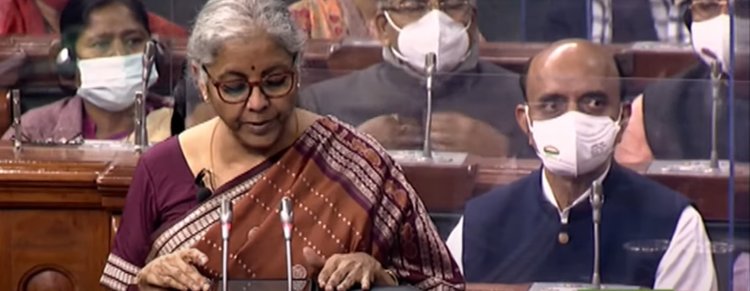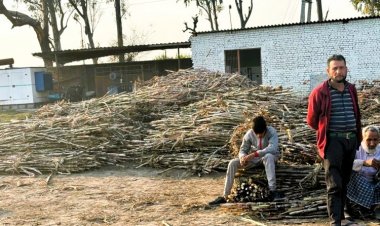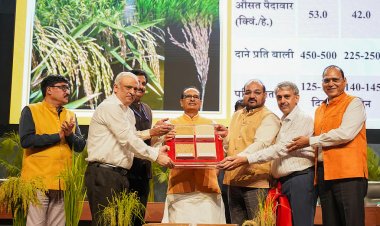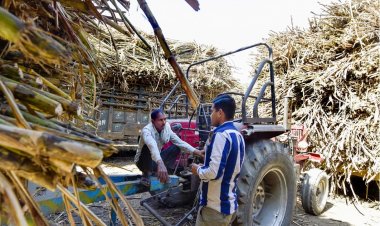6.4 per cent fiscal deficit for FY23, says FM Sitharaman in her Budget speech
Gati Shakti Master Plan, raising capital expenditure, and issuing digital rupee were the highlights of the Union Budget 2022-23, the fourth Budget of the Modi 2.0 government presented by Finance Minister (FM) Nirmala Sitharaman today February 1. FM has announced a consolidation of 0.5 percentage points over the current year, which takes the FY23 fiscal deficit to 6.4%.

Gati Shakti Master Plan, raising capital expenditure and issuing of digital rupee were the highlights of the Union Budget 2022-23, the fourth Budget of the Modi 2.0 government presented by Finance Minister (FM) Nirmala Sitharaman today February 1.
India’s economic growth in the current year is estimated to be 9.2 per cent, the highest among all large economies, said Sitharaman.
PM GatiShakti for economic growth
The impetus for growth, says the Budget, will be guided by PM GatiShakti, a transformative approach for economic growth and sustainable development. The approach is driven by seven engines, viz roads, railways, airports, ports, mass transport, waterways, and logistics infrastructure.
Under the PM GatiShakti Master Plan for Expressways, the National Highways network will be expanded by 25,000 km in 2022-23. For railways, 400 new-generation Vande Bharat Trains with better energy efficiency and passenger riding experience will be developed and manufactured during the next three years. In difficult hilly areas, National Ropeways Development Programme will be taken up on PPP mode.
Fund to finance start-ups in agriculture
Rs 2.37 lakh crore worth of MSP direct payments is being made to wheat and paddy farmers for procurement in 2021-22. Chemical-free natural farming will be promoted throughout the country. 2023 has been announced as the International Year of Millets. Support will be provided for post-harvest value addition, enhancing domestic consumption, and branding millet products nationally and internationally.
A rationalized and comprehensive scheme will be implemented to reduce reliance on oilseed imports. The use of Kisan drones will be promoted for crop assessment, digitization of land records, and spraying of insect pesticides.
States will be encouraged to revise syllabi of agricultural universities to meet the needs of natural, zero-budget and organic farming, modern-day agriculture, value addition and management. A fund with blended capital, raised under the co-investment model, will be facilitated through NABARD. This is to finance start-ups for agriculture and rural enterprise. These start-ups’ activities will include support for FPOs, machinery for farmers on a rental basis at farm level, and technology.
ECLGS extended up to March 2023
The Udyam, e-shram, NCS and Aseem portals will be interlinked and their scope will be widened. They will now perform as portals with live organic databases providing G2C, B2C and B2B services such as credit facilitation, skilling and enhancing entrepreneurial opportunities. The Emergency Credit Line Guarantee Scheme (ECLGS), which the Minister says has provided much-needed additional credit to more than 130 lakh MSMEs, will be extended up to March 2023 and its guarantee cover will be expanded by Rs 50,000 crore to a total cover of Rs 5 lakh crore. Raising and Accelerating MSME Performance (RAMP) programme with an outlay of Rs 6,000 crore over five years will be rolled out.
All post offices on CBS
Rs 60,000 crore has been allocated to provide tap water connections to 3.8 crore households in 2022-23. 80 lakh houses will be completed for the identified eligible beneficiaries of PM Awas Yojana. A National Tele Mental Health Programme will be launched to better access to quality mental health counselling and care services.
All 1.5 lakh post offices will come on the core banking system (CBS), enabling financial inclusion and access to accounts through net banking, mobile banking, ATMs, and also providing online transfer of funds between post office accounts and bank accounts. This will be helpful especially for farmers and senior citizens in rural areas, enabling interoperability and financial inclusion.
Big rise in capital expenditure
Raising capital expenditure to Rs 7.5 lakh crore in 2022-23 is huge, up 35.4% over last year's budget estimate of Rs 5.5 lakh crore. This outlay in 2022-23 will be 2.9 per cent of GDP. If we include the provision made for the creation of capital assets through Grants-in-Aid to States, the ‘Effective Capital Expenditure’ of the Central Government is estimated at Rs 10.68 lakh crore, which will be about 4.1 per cent of GDP.
Major push for digital currency
In a major push for digital currency, Sitharaman stated that digital rupee will be issued using blockchain technology by the RBI starting 2022-23. This will give a big boost to the economy, FM said. She added that income from the transfer of any virtual digital asset shall be taxed at the rate of 30 per cent.
Tariff measure to encourage blending of fuel
Blending of fuel is a priority of this Government, said Sitharaman. To encourage the efforts for blending of fuel, unblended fuel shall attract an additional differential excise duty of Rs 2 per litre from October 1, 2022.
While no change has been made in income tax rates, taxpayers have been given the opportunity to correct tax returns.
The Alternative Minimum Tax for cooperative societies has, however, been reduced to 15 per cent from the earlier 18.5 per cent. This has been done to provide them a level playing field with companies, which pay 15 per cent. The surcharge on co-operatives has also been reduced from 12 per cent to 7 per cent for those having a total income of more than Rs 1 crore and up to Rs 10 crores.
Boost to gems and jewellery
To give a boost to the gems and jewellery sector, customs duty on cut and polished diamonds and gemstones has been reduced from 7.5 per cent to 5 per cent. To facilitate the export of jewellery through e-commerce, a simplified regulatory framework shall be implemented by June this year. To disincentivise the import of undervalued imitation jewellery, at least Rs 400 per kg will have to be paid as duty on its import.
Fiscal deficit at 6.4 per cent
As against a total expenditure of Rs 34.83 lakh crore projected in Budget Estimates (BE) 2021-22, the Revised Estimate (RE) is Rs 37.70 lakh crore. The RE for capital expenditure is Rs 6.03 lakh crore. This includes an amount of Rs 51,971 crore towards the settlement of outstanding guaranteed liabilities of Air India and its other sundry commitments.
The total expenditure in 2022-23 is estimated at Rs 39.45 lakh crore, while the total receipts other than borrowings are estimated at Rs 22.84 lakh crore.
The government's fiscal deficit for FY22 settled at 6.9 per cent as against 6.8 per cent in BE. It has announced a consolidation of 0.5 percentage points, which takes the FY23 fiscal deficit to 6.4 per cent. The target is to reach a fiscal deficit level below 4.5 per cent by 2025-26.



 Join the RuralVoice whatsapp group
Join the RuralVoice whatsapp group









































